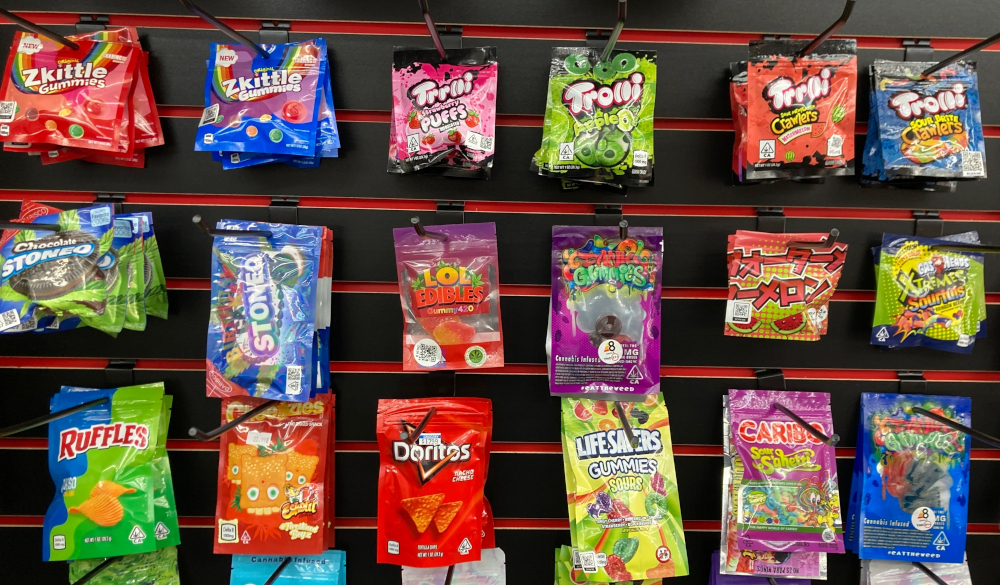To see the devastation cowboy CBD producers and their handmaidens in the “intoxicating hemp” business have brought to the industry, have a look into California. That’s where the emergence of the illicit concoctions has led to restrictions not only on “diet weed” made from hemp, but also on CBD and other cannabinoids.
Gov. Gavin Newsom’s new emergency ban, which took effect last week after it was approved by California’s Office of Administrative Law, prohibits ALL hemp products with any “detectable amount of total THC,” and limits even non-THC hemp products to five servings per package under a 21-and-older age restriction.
It’s another sad milepost down the ever-winding path for industrial hemp, where we have stopped along the way to shoot ourselves in the foot.
Tarnished
When the 2018 Farm Bill legalized industrial hemp, it ushered in a “golden age” for CBD – relatively unknown before that time – that promised health benefits without the “high” associated with THC – and riches for investors and entrepreneurs.
Predictably, the CBD Gold Rush came crashing down shortly thereafter, driven by hype that led to an oversupply and the death of 90% of companies operating in the space, according to some estimates.
To be sure, regulatory uncertainty, inconsistent legal frameworks and a dithering FDA contributed to the crash. But let’s face it: CBD’s calamitous introduction was driven by greed more than anything else.
Panacea
When consumer trust eroded amid a lack of any medical evidence to back up claims that CBD could treat everything under the sun – anxiety, depression, PTSD, schizophrenia, bipolar disorder, autism spectrum disorder, ADHD, chronic pain, arthritis, back pain, multiple sclerosis, inflammatory bowel disease, migraines, acne, eczema, psoriasis, anti-aging, heart disease, high blood pressure, stroke prevention, diabetes, weight loss, obesity, lupus, Hashimoto’s thyroiditis, rheumatoid arthritis, irritable bowel syndrome, gastroesophageal reflux disease, nausea, opioid addiction, nicotine addiction, alcoholism, insomnia, sleep apnea, restless leg syndrome, cancer treatment, cancer-related pain, chemotherapy-induced nausea, menstrual cramps, endometriosis, infertility, asthma, chronic obstructive pulmonary disease, Parkinson’s disease, Alzheimer’s disease, autonomic dysfunction (dysautonomia), and chronic fatigue syndrome(!) – the honeymoon was over before it truly got started.
Cooked up
What followed has added insult to the crash injury. To shore up their failing businesses, the sharpy CBD players still in business slithered to the bottom of the barrel, where they discovered another vein of gold – synthetic compounds that can be cooked up from hemp-derived CBD in the lab to give an effect similar to that of marijuana, including many that are specifically marketed to kids – in kiddie-type packaging on shelves in every convenience store between home and school.

We have published this image at least a dozen times on HempToday.
All technically “legal” because of a loophole in the 2018 Farm Bill that allowed for all parts of the hemp plant including downstream psychoactive products not anticipated by lawmakers.
So what started as exploiting the grey area in hemp regulation has now become a runaway problem.
CBD ≠ hemp
Along the way, “CBD” has become synonymous with “hemp” in the public’s mind. And that may be the biggest tragedy because it ignores the phenomenal potential of hemp seed for food, and fiber from the plant’s stalk – much greater long-term opportunities than some synthetic weed cooked up in the bathtub. By opening up the Pandora’s Box of “intoxicating hemp” substances, those who popped the lid have not only jeopardized their own future but severely undermined decades of work by industrial hemp producers to clearly define their non-intoxicating products in the context of cannabis generally.
Gun, meet foot
Nowhere is this fallout more apparent than in California, where the new regulations should serve as a warning to the entire hemp industry: reckless greed and shortsightedness will not go unpunished. In addition to banning the intoxicants, and the age and packaging restrictions, the California rules require that edible hemp products contain no detectable levels of THC or other cannabinoids.
Make no mistake about it: California’s newly imposed restrictions are a direct consequence of the unfortunate trend of intoxicating hemp products The state’s intention is clear: protect public safety, particularly that of children.
By helping intoxicating hemp products to infiltrate the market, these sell-at-any-cost producers have essentially ushered in the heavy hand of government regulation – something many of them fought hard to avoid when seeking legalization. They’ve not only tarnished their own reputations but have also caught the legitimate CBD market in the crossfire.
Ripple effect
Of course, California is not alone in its crackdown. Other states are following suit, with many implementing or considering laws to regulate or ban intoxicating hemp products. The situation in the states runs the gamut. Some have made the products illegal entirely; some treat them as legal but unregulated. In some states, consumer regulations apply and in others, they are treated like marijuana
While these states are mainly focused on psychoactive hemp products, the regulatory ripple effect is hitting CBD upstream, and the broader hemp industry. As more states adopt restrictive measures, the boundaries between hemp, CBD and intoxicating hemp products continue to blur in the eyes of lawmakers and the public. What was once a promising sector, with CBD positioned as a wellness product, is now being dragged down by association – again – with hemp’s psychoactive cousin Mary Jane.
One California producer emailed us: “Yup. My legit hemp superfood biz getting eaten up by Wild West hemp THC and D8 cowboys. I’m just tryn to feed my family.”
Self-inflicted
For veteran industrial hemp stakeholders, this trend is nothing short of a disaster. For decades, activists worked to educate the public and policymakers about the distinction between industrial hemp and marijuana. The message was starting to gain traction.
But the introduction of intoxicating hemp products has effectively erased that hard-fought distinction. The public is once again confused. Lawmakers, who were previously warming to the potential of hemp as a versatile, non-intoxicating crop, are now treating it with the same suspicion they reserve for marijuana. In their pursuit of profits, CBD producers and their partners in the intoxicating hemp space have set the entire industry back by years, if not decades.
What’s next?
As individual states stepped into the regulatory breach, the result is a confusing patchwork of rules that make it harder to distinguish legitimate CBD (and other hemp cannabinoid products) from those that might make you high, ultimately harming public trust and safety.
To be sure, the FDA’s prolonged delay in establishing clear regulations for CBD has significantly contributed to the current chaos in the market. The agency failed to set standards for over-the-counter CBD products while at the same time raising alarm by issuing warning after warning – eroding incentive in a promising new category.
Self-regulation among CBD producers cannot be expected. Even the legacy Hemp Industries Association has come down in support of what they euphemistically refer to as “cannabinoids,” by which they mean intoxicating hemp-derived substances.
Reflection
Moving forward, the hemp industry needs to take a hard look at itself. CBD producers and industry organizations must actively distance themselves from the intoxicating hemp space, educate lawmakers about the differences, and push for regulations that safeguard both public health and the legitimate CBD market. It remains a considerable one, even if all the rosy predictions haven’t proven accurate.

